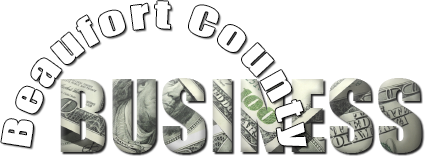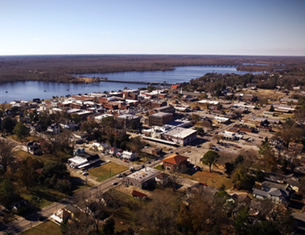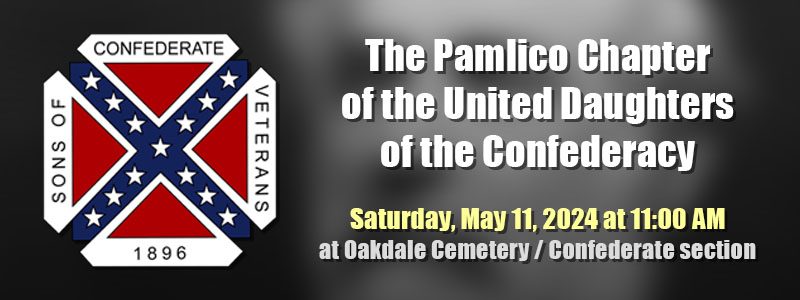Stewards of the Visual Exposition
How Much Does Government Spend on School Supplies?
Publisher's note: This post appears here courtesy of the John Locke Foundation, and written by Dr. Terry Stoops, vice president of Research and director of Education Studies for the John Locke Foundation.
This is the third of a three-part series examining the issue of school supplies. Part 1 discussed family expenditures on classroom items. Part 2 addressed teacher expenditures on classroom items. Hurricane Florence and other factors delayed publication of this analysis.
Every year, public schools receive millions from federal, state, and local governments to purchase of books, school supplies, and technology. A few weeks ago, I requested data from the N.C. Department of Public Instruction related to several categories of expenditures, including Object Code 411, which is the code used to track supply and material expenditures for public schools. (Total expenditures for Object Code 411 are detailed in Table 1 below.)
Although the state tracks aggregate spending on supplies and materials, the nature of those expenditures is not known. Object Code 411 includes a number of different items. According to a publication of the N.C. Department of Public Instruction, it includes
All supplies, materials and workbooks used in the school system for instructional and non-instructional purposes. Examples of supplies: construction paper, crayons, pencils, pencil sharpeners, and other small unit cost equipment that meets the criteria for a supply item as outlined above. Examples of workbooks: map skills, handwriting, bookkeeping workbooks, etc. Includes amounts expended for supplies and materials other than instructional supplies. (Expendable tools used in the garage and School Food Service should be recorded here.) Includes amounts expended for periodicals and newspapers. A periodical is any publication appearing at regular intervals of less than a year and continuing for an indefinite period. Includes amounts expended for audiovisual supplies and materials in the local school administrative unit. Includes amounts expended for processing and cataloging books and materials in a school library. This would include kits and other supplies used for this purpose. Includes amount for subscriptions to internet-based educational resources and for the purchase of online educational media/materials used for the instruction of pupils.
One would assume that most expenditures logged under this code were for conventional school supplies, workbooks, and online instructional resources, but it is not possible to disaggregate these expenditures with the data collected by the state education agency.
Since 2011, North Carolina public schools have spent hundreds of millions on supplies and materials. Nominal expenditures for instructional supplies and materials range from a low of $271.7 million in 2015 to a high of $295.8 million in 2017. The average yearly expenditure on supplies and materials was $284 million during this period.

It is important to note that these figures do not necessarily represent the amount budgeted by elected officials in a given year. That is because state law permits districts to transfer state funds to and from their allotment for instructional materials and supplies. The transfer of local and federal funds varies according to the rules established by the funder, but it is safe to assume that school districts and charter schools use their budgetary flexibility in ways that affect funding for school supplies.
For districts, total expenditures have increased even though state and federal funds have not. This was due to a substantial increase in local dollars used for supplies and materials. Local expenditures increased by 23 percent since 2011. State and federal expenditures dropped by 30 percent and 11 percent, respectively.
Charter school spending on materials and supplies was a different story. State expenditures surged by 226 percent, local spending rose by 119 percent, and federal spending dropped by 37 percent. State and local spending trends were consistent with the rapid increase in charter enrollment since 2011. The elimination of the 100-school cap on charters and more generous enrollment allowances began the process of relieving pent-up parental demand. As a result, charter enrollment jumped from over 41,000 to well over 90,000.
Between 2011 and 2017, the average per-student district expenditure on instructional supplies and materials changed little. Unlike districts, charter spending more than made up for enrollment boom, as per-student spending fell to $209 in 2015 but exceeded $280 in 2017. Districts can achieve economies of scale that charter schools cannot, allowing them to lower the per-student cost of supplies and materials. This is one reason why district and charter spending on supplies and materials are not necessarily comparable.
The question of whether these expenditures, as well as funds spent by parents and teachers, are sufficient cannot be answered through a casual examination of data. (Despite their complaints to the contrary, educator responses to the 2018 Teacher Working Conditions Survey suggest that they are.) Nevertheless, a clear understanding of how much is spent by all stakeholders is the first step in ensuring that public schools have the instructional supplies and materials that they need to be successful in the classroom.
Go Back
This is the third of a three-part series examining the issue of school supplies. Part 1 discussed family expenditures on classroom items. Part 2 addressed teacher expenditures on classroom items. Hurricane Florence and other factors delayed publication of this analysis.
Every year, public schools receive millions from federal, state, and local governments to purchase of books, school supplies, and technology. A few weeks ago, I requested data from the N.C. Department of Public Instruction related to several categories of expenditures, including Object Code 411, which is the code used to track supply and material expenditures for public schools. (Total expenditures for Object Code 411 are detailed in Table 1 below.)
Although the state tracks aggregate spending on supplies and materials, the nature of those expenditures is not known. Object Code 411 includes a number of different items. According to a publication of the N.C. Department of Public Instruction, it includes
All supplies, materials and workbooks used in the school system for instructional and non-instructional purposes. Examples of supplies: construction paper, crayons, pencils, pencil sharpeners, and other small unit cost equipment that meets the criteria for a supply item as outlined above. Examples of workbooks: map skills, handwriting, bookkeeping workbooks, etc. Includes amounts expended for supplies and materials other than instructional supplies. (Expendable tools used in the garage and School Food Service should be recorded here.) Includes amounts expended for periodicals and newspapers. A periodical is any publication appearing at regular intervals of less than a year and continuing for an indefinite period. Includes amounts expended for audiovisual supplies and materials in the local school administrative unit. Includes amounts expended for processing and cataloging books and materials in a school library. This would include kits and other supplies used for this purpose. Includes amount for subscriptions to internet-based educational resources and for the purchase of online educational media/materials used for the instruction of pupils.
One would assume that most expenditures logged under this code were for conventional school supplies, workbooks, and online instructional resources, but it is not possible to disaggregate these expenditures with the data collected by the state education agency.
Since 2011, North Carolina public schools have spent hundreds of millions on supplies and materials. Nominal expenditures for instructional supplies and materials range from a low of $271.7 million in 2015 to a high of $295.8 million in 2017. The average yearly expenditure on supplies and materials was $284 million during this period.

It is important to note that these figures do not necessarily represent the amount budgeted by elected officials in a given year. That is because state law permits districts to transfer state funds to and from their allotment for instructional materials and supplies. The transfer of local and federal funds varies according to the rules established by the funder, but it is safe to assume that school districts and charter schools use their budgetary flexibility in ways that affect funding for school supplies.
For districts, total expenditures have increased even though state and federal funds have not. This was due to a substantial increase in local dollars used for supplies and materials. Local expenditures increased by 23 percent since 2011. State and federal expenditures dropped by 30 percent and 11 percent, respectively.
Charter school spending on materials and supplies was a different story. State expenditures surged by 226 percent, local spending rose by 119 percent, and federal spending dropped by 37 percent. State and local spending trends were consistent with the rapid increase in charter enrollment since 2011. The elimination of the 100-school cap on charters and more generous enrollment allowances began the process of relieving pent-up parental demand. As a result, charter enrollment jumped from over 41,000 to well over 90,000.
Between 2011 and 2017, the average per-student district expenditure on instructional supplies and materials changed little. Unlike districts, charter spending more than made up for enrollment boom, as per-student spending fell to $209 in 2015 but exceeded $280 in 2017. Districts can achieve economies of scale that charter schools cannot, allowing them to lower the per-student cost of supplies and materials. This is one reason why district and charter spending on supplies and materials are not necessarily comparable.
The question of whether these expenditures, as well as funds spent by parents and teachers, are sufficient cannot be answered through a casual examination of data. (Despite their complaints to the contrary, educator responses to the 2018 Teacher Working Conditions Survey suggest that they are.) Nevertheless, a clear understanding of how much is spent by all stakeholders is the first step in ensuring that public schools have the instructional supplies and materials that they need to be successful in the classroom.
Latest Op-Ed & Politics
|
illegal alien "asylum seeker" migrants are a crime wave on both sides of the Atlantic
Published: Thursday, April 18th, 2024 @ 8:10 am
By: John Steed
|
|
UNC board committee votes unanimously to end DEI in UNC system
Published: Thursday, April 18th, 2024 @ 7:54 am
By: John Steed
|
|
this is the propagandist mindset of MSM today
Published: Wednesday, April 17th, 2024 @ 3:04 pm
By: John Steed
|
|
Police in the nation’s capital are not stopping illegal aliens who are driving around without license plates, according to a new report.
Published: Wednesday, April 17th, 2024 @ 8:59 am
By: Daily Wire
|
|
same insanity that created Covid
Published: Wednesday, April 17th, 2024 @ 8:58 am
By: John Steed
|
|
Davidaon County student suspended for using correct legal term for those in country illegally
Published: Wednesday, April 17th, 2024 @ 7:23 am
By: John Steed
|
|
given to illegals in Mexico before they even get to US: NGOs connected to Mayorkas
Published: Tuesday, April 16th, 2024 @ 11:36 am
By: John Steed
|





















